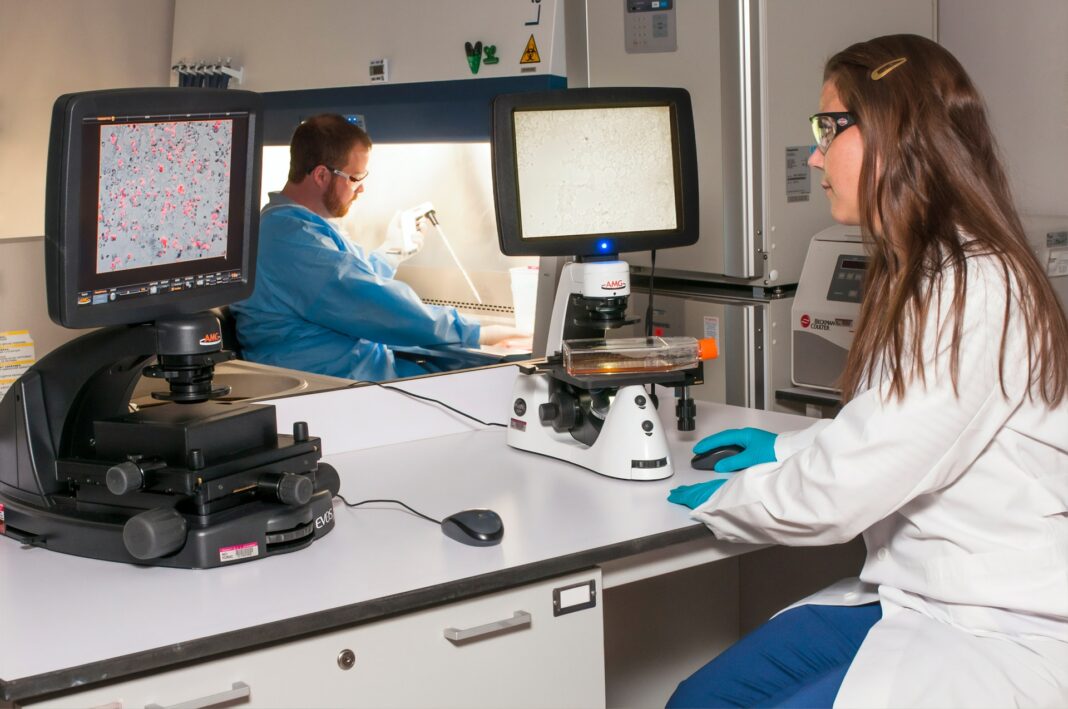The healthcare industry is getting over one of the worst crises ever. With the new version of coronavirus hitting the world, all attention was drawn to health and medicines.
These last two years proved again that the healthcare industry is an ever-changing field, needing a constant track.
Whether you have a business or an individual interested in healthcare technologies, you need to track what new things are offered in the world.
Thanks to online marketplaces for purchasing medical devices, you can easily find what brand-new equipment is in the market.
But if you want to get ahead of the competition and predict what will come in the future, you have studied more.
In this post, we’ve gathered a list of top medical techs that are going to be a trend in 2022.
Telemedicine
It seems that telemedicine technologies have come to stay forever. Particularly, during the Covid-19 epidemic, telemedicine made significant progress and increased our dependence on this smart tech.
In January 2020, it was anticipated that 24% of healthcare companies had a telemedicine program in place. It’sacticipated that more than a billion online visits will be held each year in 2022.
Many of telehealth’s regulatory restrictions have been lifted as a result of its forced implementation, and healthcare companies now have nearly a year’s worth of data on how to assess and enhance telehealth services.
Many healthcare companies will be concentrating their efforts in 2022 on how to effectively combine telehealth services with current physical ones.
Virtual visits will continue to be utilized to strengthen collaboration with clinics, long-term care institutions, dialysis centers, and mental health services, as well as to boost access to primary care and urgent care.
Nano-Medicine
Nanotechnology is atomic, molecular, or supramolecular size technology and is revolutionizing many industries, especially the healthcare industry.
Nanomedicine is the medical use of nanotechnology, which offers applications in imaging, sensing, diagnostics, and distribution through medical devices, and the potential is enormous for something so small.
Researchers are developing new techniques to employ nanomedicine to target specific cells, and their findings will be implemented in 2022.
Nanoparticles can play a crucial role in targeting tumors and even bacterias or viruses in the near future.
Internet of Medical Things
In the healthcare industry, the Internet of Things (IoT) can be regarded as the interconnection between medical equipment such as monitors, smartwatches, and fitness trackers, and implanted medical devices.
These devices can transmit signals containing data that allow doctors to perform many complex treatments remotely.
The main drivers of cutting-edge technology—AI, IoT, and Big Data—need a stable and lightning-fast internet connection to fulfill their full potential in healthcare. Then there’s 5G.
The most immediate benefits of a stable real-time link will be evident in telemedicine, which will increase access to treatment for millions of people. But that’s only the start. The promise of a revolutionized healthcare system opens up with more linked devices and more genuine data streams.
Sensors and medical equipment connected to 5G have near-zero latency, allowing them to gather and transfer data almost instantly. As a result, patient monitoring will improve, and patient outcomes will improve as well. The benefits of combining 5G, healthcare, and robots are already being considered by futurists.
Patients, on the other hand, will not have to wait long for a change: experts anticipate that 5G-enabled gadgets will quickly usher in a new healthcare paradigm known as 4P, which stands for predictive, preventive, personalized, and participatory care.
Using Big Data Analytics to Help Disease Prevention
The technology revolution continues, and the amount of healthcare data gathered in recent years is incredible.
Scientists may utilize the vast (anonymized) data sets to figure out medical patterns and trends, allowing them to identify new correlations between demography, environment, economy, and a variety of other elements on the one hand, and population health on the other.
Data may be processed as Big Data when a significant volume is available to scientists; it can then be put into AI or deep learning algorithms to be evaluated and interpreted, providing mankind with medical insights that have never been available before.
These kinds of analytics can help with chronic illness prevention and long-term treatment regimens. Big data may also aid in pandemic prevention, like a clever concept to use analytics to combat COVID-19.
Augmented Reality for Education and Decision Making
A human is placed in computer-rendered or fully recreated settings with augmented and virtual reality technologies.
This might help medical students feel more at ease in virtual circumstances and locales that are comparable to what they could encounter in real life and practice their abilities without having to visit hospitals or interact with real patients.
A computer-rendered overlay of supplementary information or virtual objects is added to the real environment using augmented reality solutions.
Students or healthcare professionals can utilize augmented reality to obtain information and reports while working with patients or without leaving their present operations, in a hands-free mode, by voice command, or by having supportive data surface automatically.
Digital Twin for Healthcare Technologies
Mixed reality connects things in computer-generated virtuality with objects in real-world surroundings, allowing you to control both sorts of objects at the same time (so-called creation of a digital twin).
Another use of this technique is the creation of totally conforming virtual replicas of real-world objects in order to evaluate these “digital twins” in a virtual environment.
When it comes to approving proposed medical devices, biocompatible materials, or prostheses, this process is unrivaled. When it comes to medical technology design and engineering, the prototype process may be made faster and less expensive.
It is no longer essential to building a tangible sample/prototype to be examined in the lab thanks to digital twin technology. Medical engineers can instead develop a geometrically and physically realistic virtual model of an object and test it in a virtual environment.
Conclusion
Medical technologies are being revolutionized thanks to new advances in AI, VR, AR, Internet, and other high-tech fields. It’s important to keep yourself updated to be able to get ahead of the competition in this industry.



